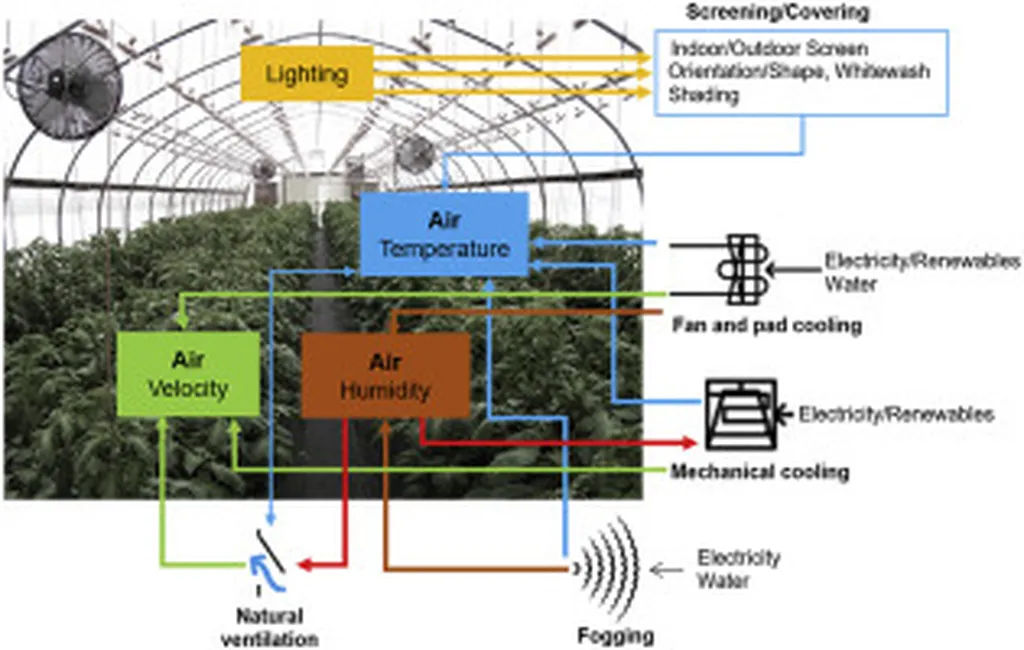In the heart of Seoul, a breakthrough in greenhouse technology is taking root, promising to revolutionize the way we cultivate crops and manage energy consumption. Yerim Jo, a researcher from the Department of Landscape Architecture and Rural Systems Engineering at Seoul National University, has developed a novel double-layer perforated air duct system that could significantly enhance the uniformity of environmental conditions in greenhouses. This innovation, detailed in a recent study published in the *Journal of Agricultural Engineering*, could have substantial commercial impacts, particularly in the energy sector.
Greenhouses are vital for modern agriculture, allowing us to grow crops year-round and in diverse climates. However, maintaining consistent environmental conditions within these structures has always been a challenge. Traditional single-layer perforated air ducts often result in uneven airflow and temperature distributions, leading to inefficiencies and potential crop losses. Jo’s research addresses this issue head-on by introducing a double-layer duct system that promises to deliver more uniform airflow and thermal conditions.
The study employed computational fluid dynamics (CFD) simulations to compare the performance of the conventional single-layer ducts with the new double-layer design. The results were striking. “The double-layer duct significantly improved the uniformity of the jet flow temperature and mass flow rate compared with the single-layer duct,” Jo explained. The space between the inner and outer tubes in the double-layer duct acts as both a thermal insulation layer and a pressure chamber, maintaining a high, uniform internal static pressure and a low, consistent air velocity. This innovation led to a maximum improvement in temperature uniformity of 75% and a 42% improvement in mass flow rate uniformity.
The implications of this research are far-reaching. For greenhouse operators, the double-layer duct system could mean more consistent crop growth and higher yields. For the energy sector, the improved efficiency could translate into significant energy savings, as heating and cooling systems would operate more effectively. “This technology has the potential to reshape the way we design and operate greenhouses,” Jo noted. “It’s not just about improving crop yields; it’s about creating a more sustainable and energy-efficient agricultural system.”
The study also analyzed three different double-layer duct designs, each with varying hole arrangements, sizes, and spacings. This flexibility in design allows for customization based on specific greenhouse requirements, further enhancing the system’s versatility and applicability.
As the world grapples with the challenges of climate change and food security, innovations like Jo’s double-layer perforated air duct system offer a beacon of hope. By improving the uniformity of environmental conditions in greenhouses, this technology can contribute to more sustainable and efficient agricultural practices. The research, published in the *Journal of Agricultural Engineering* (translated to English as *농업기계학회지*), underscores the importance of interdisciplinary approaches in addressing global challenges.
Looking ahead, the commercial potential of this technology is immense. Greenhouse operators, agricultural technology companies, and energy providers all stand to benefit from this innovation. As the world moves towards more sustainable and efficient agricultural practices, Jo’s research could pave the way for a new era in greenhouse cultivation.
In the words of Yerim Jo, “This is just the beginning. The potential applications of this technology are vast, and I am excited to see how it will shape the future of agriculture.” With such promising developments on the horizon, the future of greenhouse cultivation looks brighter than ever.

